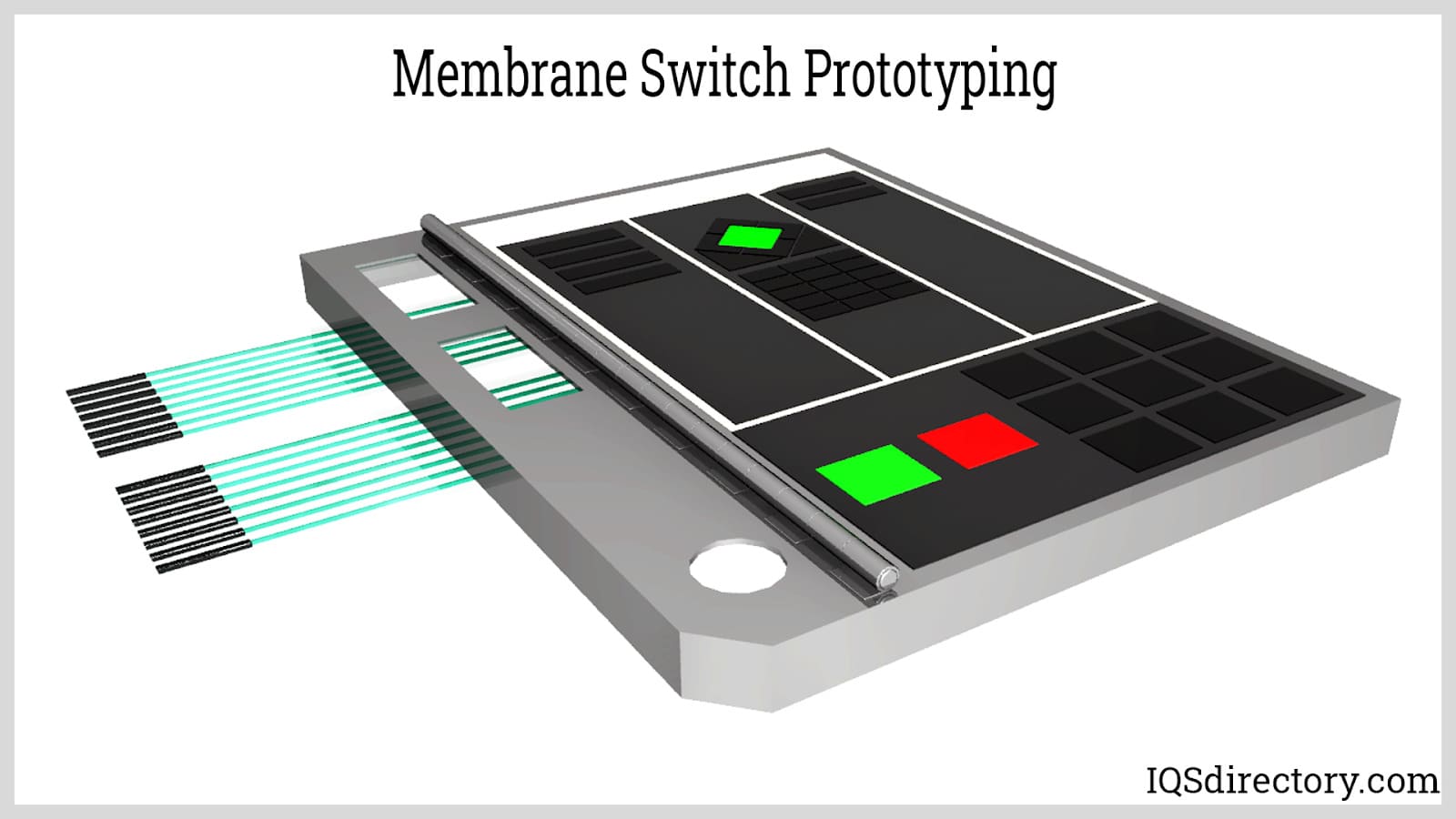The role of membrane switch in next-gen consumer appliances
Recognizing the Relevance of Membrane Layer Switch in Modern Electronic Devices
Membrane switches are essential components in modern digital tools. They use a blend of capability and style that boosts individual communication. Their light-weight and resilient nature makes them suitable for various applications. As markets develop, the need for modification and advanced attributes expands. Recognizing just how membrane switches contribute to advancement reveals their importance fit the future of electronics. What lies ahead for this modern technology?
The Basics of Membrane Change Innovation
Although usually neglected, membrane button modern technology plays an essential function in the modern-day electronic devices landscape - membrane switch. These devices, made up of several layers, function as user interfaces for numerous digital items, ranging from house appliances to medical tools. A normal membrane layer switch is composed of a graphic overlay, a spacer layer, and a circuit layer, which are meticulously put together to produce a practical interface.When pressure is related to the overlay, the circuit layer is finished, permitting signals to be transferred to the device. This technology is known for its versatility, enabling customization in style, form, and capability to fulfill particular user requirements. Furthermore, membrane buttons are thin and light-weight, making them appropriate for applications where area is a premium. Their resilience and resistance to environmental variables even more improve their charm, guaranteeing they can stand up to severe conditions while preserving capability. In general, membrane button modern technology is important to producing easy to use and efficient electronic tools

Secret Advantages of Membrane Switches Over
Membrane layer switches deal a number of key benefits that make them a preferred option in numerous electronic applications. Their layout permits for a portable kind variable, allowing suppliers to produce streamlined and lightweight tools. In addition, membrane layer switches are immune to dirt, moisture, and chemicals, which boosts their resilience and durability sought after environments. The responsive feedback given by these switches can enhance customer experience, making them instinctive and simple to operate.Furthermore, membrane layer buttons can be tailored with varied graphics and colors, permitting unique branding chances. The manufacturing process is normally cost-efficient, especially for high-volume manufacturing, as it minimizes setting up time and simplifies layout. Finally, membrane switches over need minimal maintenance, adding to lower overall functional prices. These benefits highlight their expanding popularity in contemporary electronics, where integrity and easy to use user interfaces are crucial.

Applications Across Various Industries
The convenience of membrane switches allows their extensive fostering across numerous markets. In the medical field, they are generally utilized in diagnostic tools and person monitoring systems, offering a durable interface immune to contaminants. The vehicle sector makes use of membrane layer buttons for dashboard controls, enhancing customer experience with sleek designs that endure severe problems. In consumer electronics, they function as control panels for gadgets such as microwaves and coffee makers, providing a straightforward interface that is easy to tidy. The aerospace industry uses membrane layer switches in cockpit controls, where reliability and area efficiency are critical. In addition, the industrial market leverages these switches in equipment and control systems to ensure durable procedure sought after settings. This wide variety of applications underscores the versatility of membrane layer buttons, making them important elements in enhancing capability and individual interaction throughout varied technical landscapes.
Personalization and Style Adaptability

Future Patterns in Membrane Change Development
Arising fads in membrane switch advancement show a growing emphasis on improved functionality and integration with clever innovations. As consumer demand for more innovative electronic gadgets rises, producers are concentrating on developing membrane layer switches over that not only offer Discover More fundamental functional functions but additionally include attributes like touch sensitivity, backlighting, and haptic feedback.Furthermore, improvements in materials are anticipated to enhance resilience and ecological resistance, making membrane layer changes ideal for varied applications in industries such as medical care, automotive, and customer electronics. The assimilation of capacitive touch technology is most likely to come to be much more widespread, permitting sleeker styles and improved individual interfaces. membrane switch.Additionally, the rise of the Net of Things (IoT) is triggering the development of membrane changes that can communicate wirelessly with various other tools, boosting interconnectivity. On the whole, the future of membrane switch modern technology appears promising, driven by innovation and the search of easy to use solutions
Frequently Asked Questions
Exactly How Do Membrane Layer Switches Compare to Typical Mechanical Switches?
Membrane layer switches, being more space-efficient and using a streamlined design, comparison with traditional mechanical buttons that offer responsive comments. The previous often include adjustable graphics, while the latter generally assure toughness and dependability in numerous applications.
What Products Are Generally Utilized in Membrane Change Production?
Membrane switches are usually generated using materials such as polyester, polycarbonate, and printed conductive inks. These products give resilience, adaptability, and responsiveness, making them appropriate for different applications in digital tools and interface.
Can Membrane Layer Switches Over Be Repaired or Recycled?
Membrane layer switches can typically be repaired, particularly if small problems arise, such as glue failure or surface area damage. Full reuse is commonly limited due to use and prospective deterioration of products over time.
Exactly How Do Ecological Factors Affect Membrane Layer Switch Over Performance?
Ecological elements, such as humidity, exposure, and temperature to chemicals, considerably influence membrane layer switch performance. Extreme conditions can lead to deterioration, affecting responsiveness and durability, ultimately jeopardizing the functionality of the device in numerous applications.
What Is the Regular Life Expectancy of a Membrane Layer Change?
The regular life-span of a membrane switch usually varies from 1 to 5 million actuations, depending upon elements such as use regularity, environmental conditions, and the products made use of in manufacturing, affecting resilience and performance longevity. A regular membrane button consists of a graphic overlay, a spacer layer, and a circuit layer, which are thoroughly set up to develop a useful interface - membrane switch.When pressure is applied to the overlay, the circuit layer is finished, permitting signals to be transmitted to the device. The tactile responses offered by these buttons can improve user experience, making them easy and intuitive to operate.Furthermore, membrane buttons can be tailored with varied graphics and colors, permitting for one-of-a-kind branding chances. As customer demand for a lot more innovative digital gadgets boosts, makers are focusing on creating membrane switches that not only offer fundamental functional functions but also integrate features like touch level of sensitivity, backlighting, and haptic feedback.Furthermore, improvements in products are anticipated to improve toughness and environmental resistance, making membrane switches over ideal for diverse applications in markets such as medical care, vehicle, and consumer electronics. The combination of capacitive touch modern technology is most likely to come to be a lot more common, enabling for sleeker layouts and boosted user interfaces.Additionally, the surge of the Net of Points (IoT) is triggering the growth of membrane layer switches use this link that can connect wirelessly with other tools, improving interconnectivity. Membrane layer buttons, being more space-efficient and supplying a streamlined design, comparison with traditional mechanical buttons that supply responsive responses